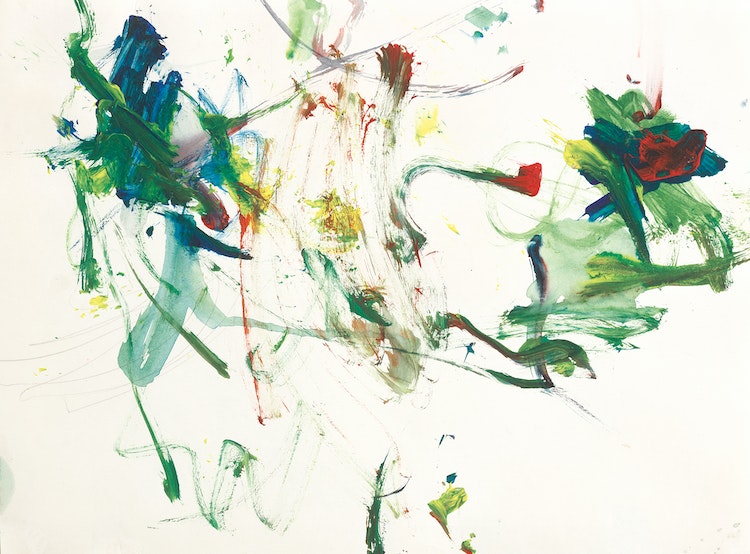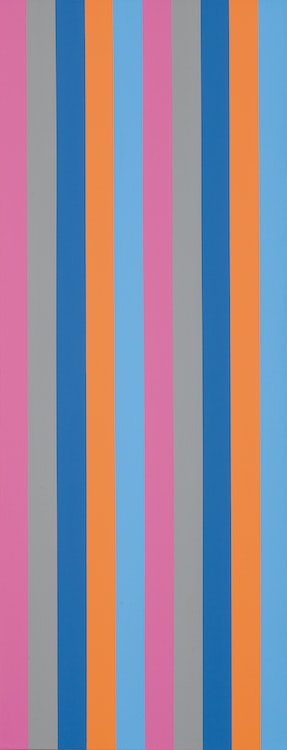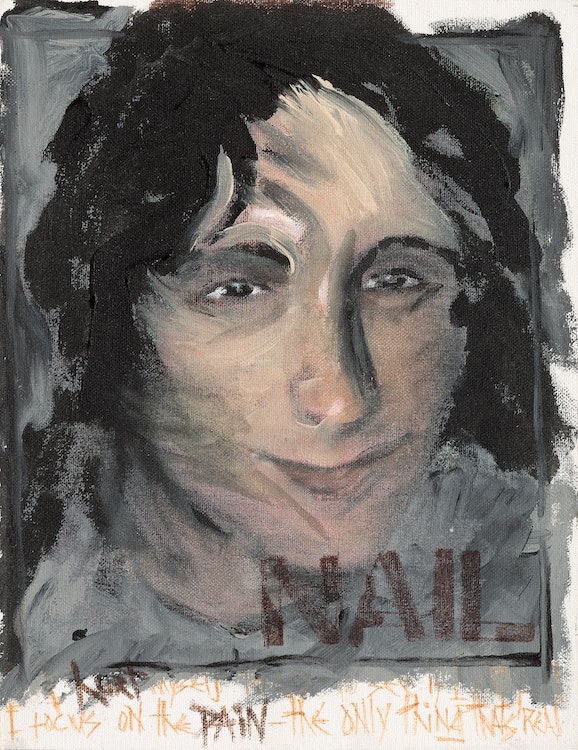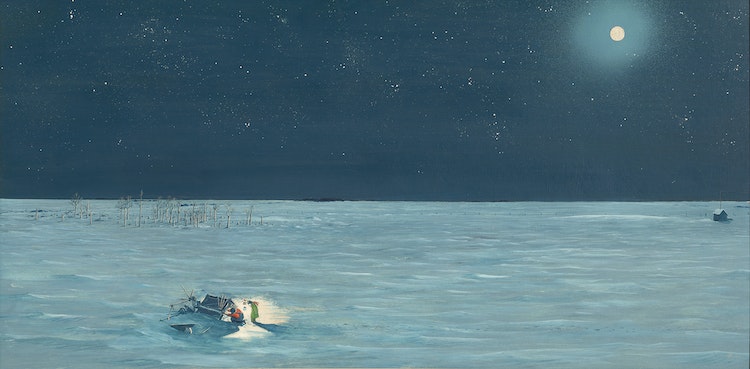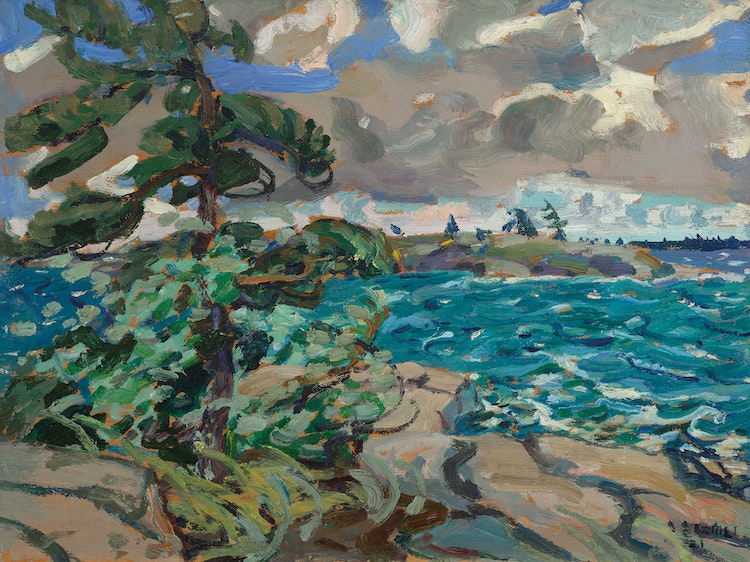American artist Andy Warhol once declared “I want to be as famous as the Queen of England”. A leading figure of the Pop Art movement of the 1950s and 60s, Warhol was famous for appropriating familiar images from consumer culture and mass media, including many silkscreen prints of public figures. Determined to become a celebrity himself, he made art out of what people desired most: money, power and fame. Some of his early subjects in the 1960s were photographs of Marilyn Monroe, Elvis Presley, and Elizabeth Taylor. By the following decade, he had garnered sufficient success and recognition that he began to receive portrait commissions from living celebrities including the Shah of Iran, Mohammad Reza Pahlavi, as well as his wife and sister, Mick Jagger, Liza Minnelli, John Lennon, Diana Ross, and Brigitte Bardot. People were eager to be immortalized in Warhol’s signature silkscreen techniques and fluorescent colour schemes.
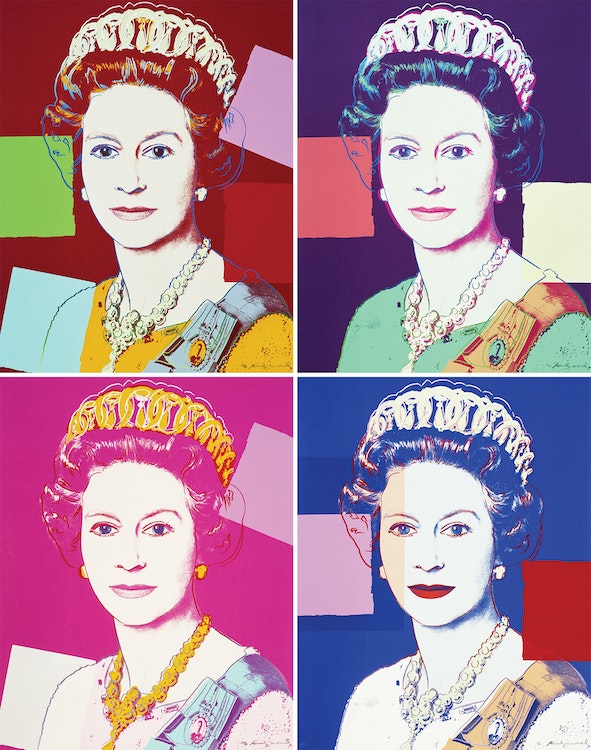
However, there were some public figures who remained out of reach for Warhol. One was Queen Elizabeth II, who was widely considered the most recognizable person in the world. Warhol was eager to make a portrait of her, and in 1982 his European dealer George Mulder wrote a letter to the monarch’s private secretary, Sir William Heseltine. Mulder requested permission for Warhol to create a set of four silkscreen prints using the Queen’s official portrait from the Silver Jubilee in 1977, a photograph taken by Peter Grugeon at Windsor Castle on April 2, 1975. Heseltine replied with an ambiguous, but ultimately favourable response, writing, “While The Queen would certainly not wish to put any obstacles in Mr. Warhol’s way, she would not dream of offering any comment on this idea.”
Delighted, Warhol set to work on his largest and most ambitious portfolio of silkscreens. The result was the Reigning Queens series featuring four prints each of Queen Elizabeth II of the United Kingdom, Queen Beatrix of the Netherlands, Queen Ntombi Twala of Swaziland and Queen Margrethe II of Denmark. These four female monarchs were all ruling in the world at the time of the portfolio’s publication in 1985, and each of them had assumed the throne by birthright, rather than through marriage. Warhol, who was fascinated by universal images, based these silkscreens on the queens’ official state portraits, as these photographs were often mass-produced on currency and stamps. Warhol presents Queen Elizabeth II as an iconic and glamorous figure. “Time Magazine” wrote that Warhol’s portraits of Queen Elizabeth II “treat her like any other celebrity, frozen in time and bright colours”. The repetition of the four prints is reminiscent of postage stamps, referencing the extent of the mass production of the Queen’s image. Warhol has treated the Queen not as a monarch, but as one of the many celebrities he depicted. His approach reinvigorated the traditional presentation of royalty.
The same image of Queen Elizabeth II appears in all four prints but they vary in colour. Each features graphic colour blocks applied separately over the photographs. Warhol began working in this style in the mid-1970s, fragmenting the image with various overlaid shapes and areas of colour. He also added his own outlines, suggesting the stylized make-up of a Hollywood star, and associating the portrait with the cult of celebrity that was prevalent in the 1980s and in Warhol’s œuvre. By comparison to his earlier prints which had a deliberately impersonal, automated appearance, these decorations to the image gave the work a more ‘artistic’ look. With his typical ambivalent attitude, Warhol explained these modifications to his prints as extraneous: “I really would still rather do just a silkscreen of the face without all the rest, but people expect just a little bit more. That’s why I put in all the drawing.”
“Queen Elizabeth II” was well-received by the Royal Collection of the British Royal Family, who wrote that “Warhol has simplified Grugeon’s portrait so that all that remains is a mask-like face. All character has been removed and we are confronted by a symbol of royal power”. George Mulder sent photographs of the prints to the Palace, possibly hoping the Queen might consider purchasing one. Heseltine replied to Mulder: “I am commanded by the Queen to acknowledge your letter of 11th March and to thank you for sending the photographs of the silkscreen prints by Andy Warhol which Her Majesty was most pleased and interested to see”. Later, in 2012, four prints from the Royal edition of “Queen Elizabeth II” were acquired by the British Royal Collection. These prints are the only portraits in the Royal Collection that Queen Elizabeth did not sit for or commission.
The Reigning Queens series combines many of Warhol’s central themes – celebrity, portraiture, consumerism, decoration and social hierarchy.
The four works comprising “Queen Elizabeth II” are printed in an edition of forty with ten artist proofs, five printer proofs and three hors commerce. The work is also published as a Royal Edition with diamond dust on the drawing lines, published in an edition of thirty with five artist proofs, two printer proofs and two hors commerce. These four silkscreen prints are highly coveted, particularly as a complete set, as they had a rejuvenating influence on the nature of portraiture and are some of Andy Warhol’s most celebrated work.
This collection of four works is being sold to benefit the Winnipeg Art Gallery (WAG)-Qaumajuq in establishing an endowment fund to support more diverse representation in the permanent collection, beginning with contemporary Indigenous art. Cowley Abbott is proud to donate our selling commission to the fund as part of the sale.

